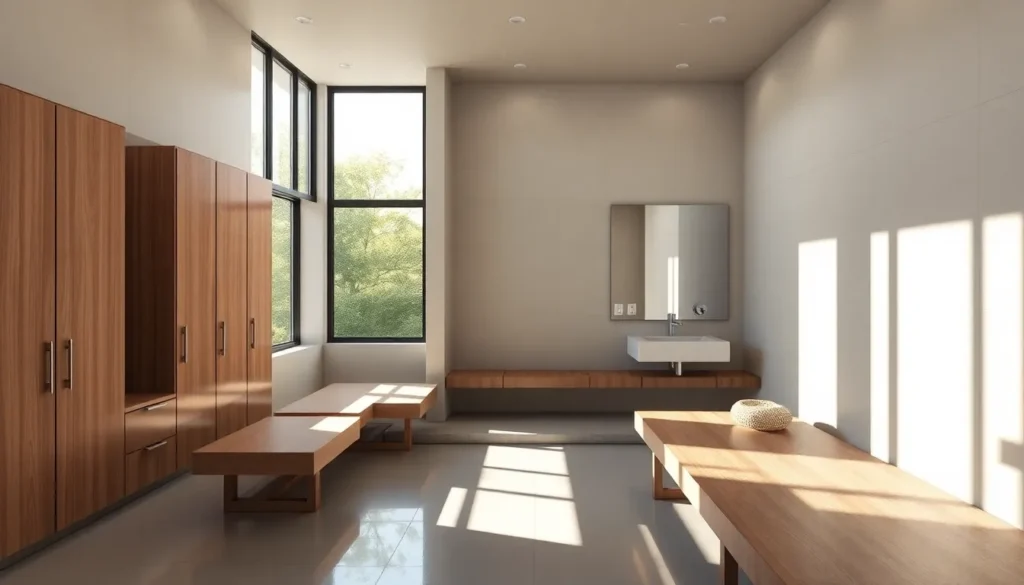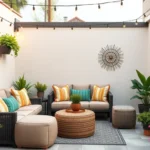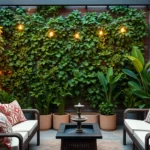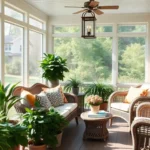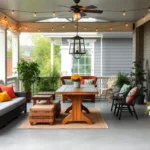Creating the perfect pool changing room can transform your backyard oasis from ordinary to extraordinary. We’ve all experienced those awkward moments of trying to change poolside or dripping water through the house – but it doesn’t have to be that way. A well-designed changing room isn’t just about convenience; it’s about improving your entire pool experience while adding important value to your property.
Whether you’re working with a spacious pool house or a compact corner of your yard, we’ll show you how to maximize every square foot. From sleek modern designs that complement contemporary pools to rustic retreats that feel like private spa sanctuaries, the possibilities are endless. Smart storage answers, proper ventilation, and stylish finishes can turn even the smallest space into a functional luxury.
We’ve gathered innovative ideas that work for every budget and space constraint, ensuring your pool area becomes the ultimate entertainment destination your family and guests will love.
Modern Minimalist Pool Changing Room Designs
Modern minimalist designs transform pool changing rooms into sophisticated spaces that prioritize functionality without sacrificing style. These designs emphasize clean aesthetics and efficient storage answers that complement contemporary pool areas.
Sleek Built-In Storage Answers
Built-in storage maximizes every inch of space while maintaining the clean aesthetic that defines minimalist design. Recessed wall cabinets provide ample storage for towels, swimwear, and pool accessories without protruding into the room. Floor-to-ceiling wardrobes with flush doors create seamless storage walls that disappear into the room’s architecture.
Custom bench seating with integrated storage compartments serves dual purposes in compact changing rooms. Hidden storage beneath seating areas accommodates pool toys, cleaning supplies, and seasonal items. We recommend installing soft-close mechanisms on all built-in storage to maintain the quiet, refined atmosphere that minimalist spaces require.
Vertical storage answers work exceptionally well in narrow changing room layouts. Tall, slim cabinets use vertical space efficiently while maintaining the room’s open feel. Pull-out drawers and sliding panels ensure easy access to stored items without creating visual clutter.
Clean Lines and Neutral Color Palettes
Neutral color schemes create the foundation for successful minimalist pool changing rooms. White, beige, and soft gray tones reflect natural light and make small spaces appear larger. Monochromatic palettes using varying shades of the same color add depth without overwhelming the space.
Geometric patterns in subtle tones can add visual interest without compromising the minimalist aesthetic. Large format tiles with minimal grout lines create smooth, uninterrupted surfaces that enhance the clean design approach. We suggest using the same flooring material throughout the changing room to create visual continuity.
Natural materials like light wood, stone, and concrete complement neutral palettes while adding texture. These materials bring warmth to minimalist spaces that might otherwise feel cold or sterile. Accent walls featuring natural stone or wood can serve as focal points without disrupting the overall design harmony.
Floating Vanities and Wall-Mounted Fixtures
Wall-mounted vanities create the illusion of more floor space while providing essential functionality. Floating vanities with integrated sinks offer clean lines and easy maintenance access. These fixtures work particularly well in small changing rooms where every square foot counts.
Wall-mounted storage cubes and shelving systems maintain the minimalist aesthetic while providing practical storage. Open shelving displays neatly folded towels and creates visual breaks in otherwise plain walls. We recommend limiting open storage to essential items to prevent visual clutter.
Suspended benches and seating eliminate the need for legs or supports that can interrupt clean floor lines. These fixtures appear to float, creating an airy feel that’s essential to minimalist design success. Wall-mounted hooks and towel bars keep essentials within reach while maintaining the uncluttered appearance that defines modern minimalist spaces.
Rustic and Natural Pool Changing Room Concepts
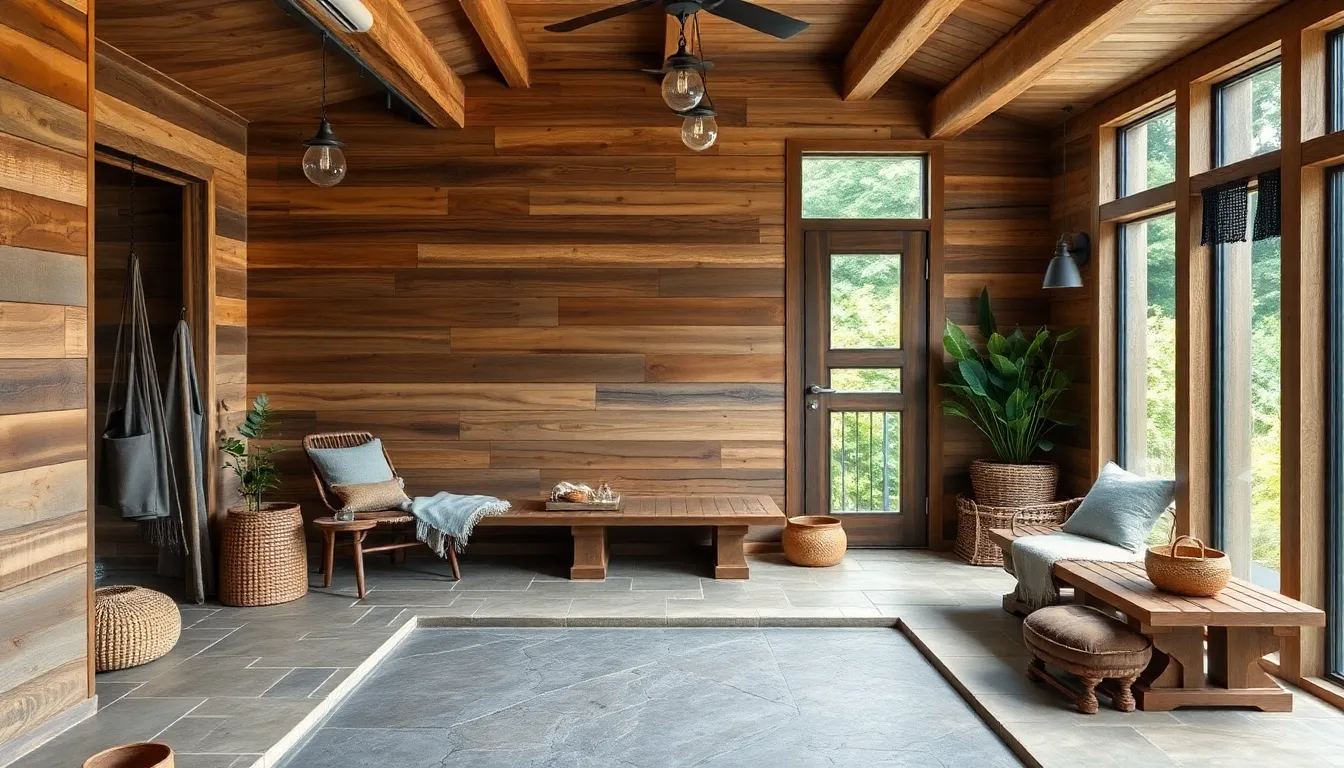
Moving from sleek minimalism to embrace nature’s warmth, rustic pool changing rooms create an inviting countryside retreat atmosphere that seamlessly blends with outdoor landscapes.
Reclaimed Wood Accent Walls
Weathered wood panels transform sterile spaces into cozy sanctuaries by introducing authentic textures and natural character that mass-produced materials simply can’t match. Reclaimed barn wood, salvaged dock planks, and repurposed fence boards bring unique grain patterns and color variations that tell stories of their previous lives.
Natural imperfections become design features when you select wood with nail holes, saw marks, and weathering that adds visual depth to accent walls. These authentic details create focal points that draw the eye and establish the rustic foundation for your changing room design.
Brown and gray wood tones anchor the space while providing the perfect backdrop for stone elements and earth tone accessories. Vertical planking can make ceilings appear higher, while horizontal installations create the illusion of wider walls in compact changing areas.
Stone and Tile Feature Elements
Natural stone flooring grounds the rustic aesthetic while providing the durability needed for wet pool environments. River rock, slate, and travertine tiles offer slip-resistant surfaces that handle moisture beautifully while maintaining their natural appeal.
Stone countertops and built-in benches serve dual purposes as both functional seating and storage surfaces for towels and pool accessories. Granite, limestone, and sandstone options provide varied textures that complement reclaimed wood elements without competing for attention.
Earth-toned tiles in neutral shades such as warm beiges, soft grays, and muted browns enhance water resistance in shower areas while supporting the organic design theme. Textured ceramic and porcelain options mimic natural stone at more budget-friendly price points.
Organic Textures and Earth-Tone Finishes
Natural color palettes featuring browns, beiges, and forest greens create tranquil atmospheres that help bathers unwind after pool activities. These earth-inspired hues work harmoniously with outdoor vegetation and pool deck materials for seamless visual flow.
Textured plaster and stucco finishes add tactile interest to walls while providing subtle color variations that enhance the handcrafted appeal. Organic textures break up flat surfaces and create shadow play that changes throughout the day as natural light shifts.
Woven fabrics and natural fiber accessories such as jute rugs, bamboo storage baskets, and linen window treatments complete the rustic experience. These organic elements soften hard surfaces while providing practical storage answers that maintain the natural design aesthetic.
Luxury Spa-Inspired Pool Changing Room Ideas

Transform your poolside experience with sophisticated design elements that rival the finest resort destinations. We’ll explore how premium materials, heated amenities, and sensory enhancements create an indulgent retreat right in your backyard.
Premium Material Selections
Natural stone elevates your pool changing room with timeless elegance and superior durability in moisture-rich environments. Marble surfaces bring sophisticated luxury while offering excellent resistance to humidity and water exposure. Teak and other weather-resistant hardwoods provide warmth and character that improves with age and use.
High-quality ceramic and porcelain tiles deliver both beauty and functionality with their non-slip surfaces and easy maintenance requirements. These premium materials create sophisticated atmospheres while ensuring longevity in challenging pool environments. Natural stone flooring and countertops complement rustic or contemporary designs with their authentic textures and earth-toned finishes.
Premium materials not only enhance visual appeal but also provide practical benefits like reduced maintenance and improved durability. We recommend selecting materials that balance luxury aesthetics with moisture resistance for optimal long-term performance.
Heated Flooring and Towel Warmers
Radiant floor heating systems transform cold surfaces into welcoming pathways that enhance comfort during pool transitions. Installation beneath tile or stone floors provides even heat distribution throughout the changing area. Wall-mounted towel warmers offer convenient placement while maximizing floor space in compact layouts.
Freestanding towel warmers create focal points while providing luxurious warm towels after swimming or showering sessions. These heated amenities promote relaxation and comfort that extends the spa-like experience beyond the pool itself. Floor heating eliminates the shock of cold surfaces on bare feet during cooler months.
Heated flooring works particularly well with natural stone and ceramic materials that retain and distribute warmth effectively. We suggest incorporating these systems early in the design process to ensure proper installation and optimal performance.
Ambient Lighting and Sound Systems
Soft LED strips installed under benches and cabinetry create gentle illumination that avoids harsh glare during evening use. Dimmable recessed lights allow customization of brightness levels to match different activities and times of day. Sconces with warm tones contribute to tranquil atmospheres while providing practical task lighting.
Large windows and skylights introduce natural light that creates serene environments during daytime hours. Sound systems enable soothing music or nature sounds to enhance the spa-like ambiance throughout the space. Strategic placement of speakers ensures even audio distribution without overwhelming the peaceful atmosphere.
Combining multiple lighting sources provides flexibility for different moods and activities within the changing room. We recommend installing dimmer controls on all artificial lighting to create the perfect ambiance for any occasion.
Space-Saving Pool Changing Room Solutions
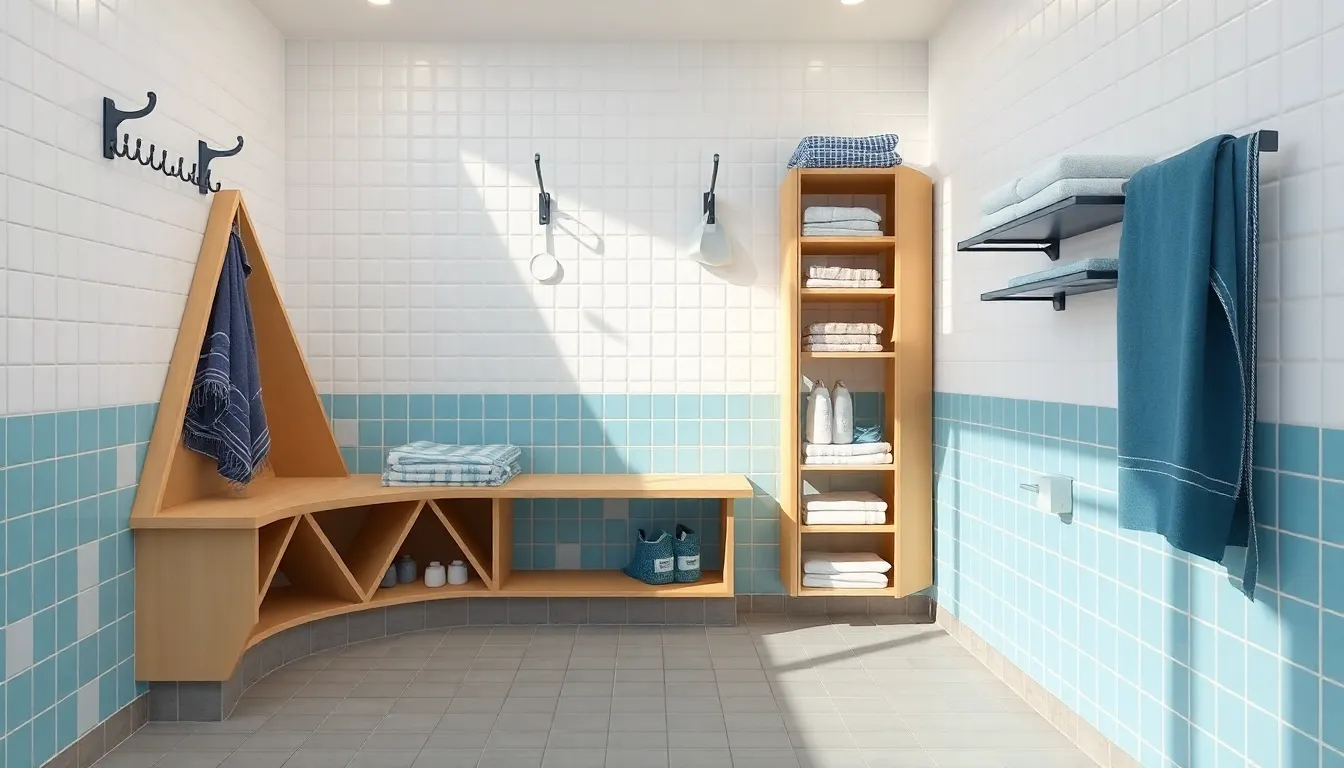
Even small pool areas can accommodate functional changing rooms when we apply smart design strategies. We’ll explore innovative approaches that maximize every square foot while maintaining style and comfort.
Compact Corner Layouts
Corner changing rooms make the most of underutilized poolside spaces without compromising functionality. We recommend installing built-in benches along two adjacent walls to create comfortable seating while maximizing floor space. Triangular corner shelving units fit perfectly into these angled spaces and provide essential storage for towels and personal items.
Pool houses often feature corner changing rooms with custom-built storage answers that fit snugly into limited areas. We suggest incorporating corner shower units when space allows, as they occupy minimal square footage while providing essential functionality. Curved or angled doors help optimize traffic flow in these compact layouts, preventing bottlenecks during busy pool days.
Privacy screens positioned diagonally across corners create intimate changing spaces without requiring full wall construction. We’ve found that corner layouts work particularly well in small yards where every inch of space matters for both functionality and aesthetics.
Multi-Functional Furniture Pieces
Benches with hidden storage compartments serve dual purposes in pool changing rooms by providing seating and organization. We recommend choosing pieces that combine multiple functions, such as storage ottomans that double as seating or fold-down changing seats with integrated towel hooks. Custom built-in units can incorporate shelving, seating, and hanging space within a single furniture piece.
Wall-mounted drop-down tables provide temporary surfaces for personal items without permanently occupying floor space. We suggest installing furniture pieces that can serve different needs throughout the day, such as benches that transform into towel storage or seats that fold up to reveal additional hanging space.
Modular furniture systems allow us to reconfigure changing room layouts based on seasonal needs or user preferences. Storage cubes can stack to create towers or spread out to form benches, providing flexibility in small spaces where adaptability is essential.
Vertical Storage Maximization
Wall-mounted storage answers take advantage of unused vertical space in pool changing rooms. We recommend installing multiple levels of hooks, shelves, and cabinets to keep towels, robes, and pool accessories organized without cluttering floor areas. Custom shelving systems can extend from floor to ceiling, maximizing storage capacity in narrow spaces.
Door-mounted racks and towel bars use every available surface for hanging storage. We suggest adding over-door organizers with multiple compartments for smaller items like sunscreen, goggles, and pool toys. Magnetic strips on metal surfaces can hold small accessories without requiring additional hardware installation.
Ceiling-mounted storage nets or baskets provide overhead space for bulky items like pool floats and seasonal equipment. We’ve found that vertical storage systems work best when organized by frequency of use, with daily essentials at eye level and occasional items stored higher up.
Outdoor Pool Changing Room Designs
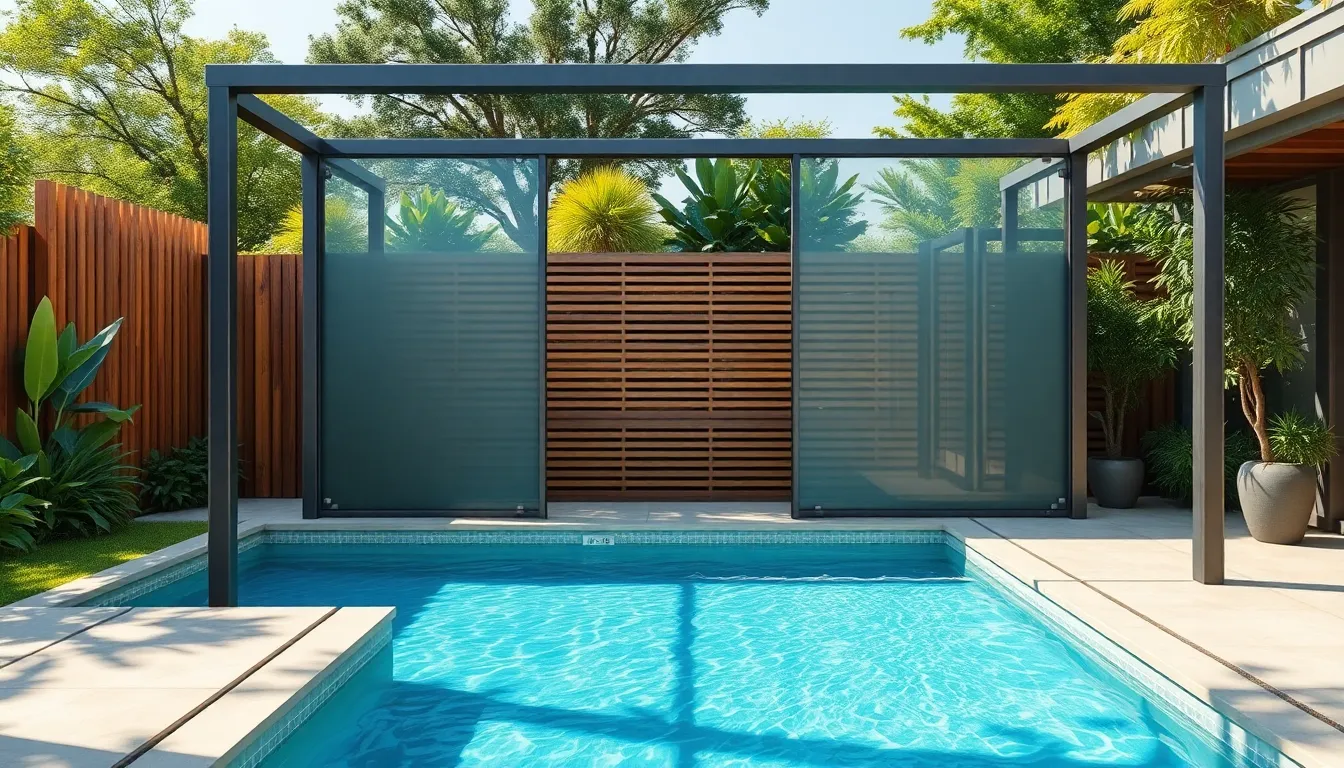
Outdoor pool changing rooms offer unique design opportunities that blend functionality with the natural poolside environment. We’ll explore the essential elements that make these structures both practical and aesthetically pleasing.
Weather-Resistant Material Choices
Metal frames paired with opaque glass panels create our most durable outdoor changing room foundation. These materials withstand harsh weather conditions while maintaining a sleek, modern appearance that complements contemporary pool designs.
Concrete block walls with smooth finishes provide exceptional longevity for outdoor installations. We recommend this option for homeowners seeking maximum durability, as concrete naturally resists moisture damage and requires minimal maintenance over time.
Treated wood screens using pine or similar materials offer versatility for cottage-style changing rooms. Applying waterproof sealants becomes crucial to prevent decay and moisture damage, extending the lifespan of wooden components significantly.
Outdoor fabrics and specialized sealants protect any textile elements from sun exposure and rain damage. Selecting materials specifically designed for outdoor use ensures your changing room maintains its appearance and functionality across multiple seasons.
Natural Ventilation Systems
Slatted wooden screens with strategic gaps allow continuous airflow while maintaining user privacy. We position these screens to create cross-ventilation patterns that prevent moisture buildup and eliminate stagnant air problems.
Open-air cabana designs help maximum natural ventilation in warm climates. These semi-enclosed structures improve comfort during hot summer days while reducing the need for mechanical ventilation systems.
Ceiling vents and louver installations enhance air circulation without compromising structural integrity. We recommend incorporating these features near the top of enclosed changing rooms to draw warm, humid air upward and out of the space.
Multi-directional airflow planning involves positioning openings to capture prevailing breezes. This design approach maximizes natural cooling effects while preventing uncomfortable drafts in the changing area.
Privacy Screening Options
Opaque and frosted glass panels block visibility while allowing natural light penetration. We use these materials to create bright, private spaces that don’t feel claustrophobic or completely enclosed.
Wooden slatted screens with calculated spacing obscure direct sight lines while permitting essential airflow. The spacing between slats can be adjusted based on your exact privacy requirements and ventilation needs.
Waterproof outdoor fabrics wrapped around frames provide flexible privacy answers that can be adjusted seasonally. We recommend this option for homeowners who want adaptable screening that changes with weather conditions or usage patterns.
Strategic landscaping integration uses plants and natural elements to enhance privacy aesthetically. Combining screening materials with carefully positioned vegetation creates multiple privacy layers while improving the overall visual appeal of your pool area.
Modular kit answers like the Suncast® Cabana Entertainment Shed offer ready-made changing room options that combine storage and privacy features. These weatherproof structures provide immediate functionality while accommodating various outdoor entertainment needs beyond simple changing facilities.
Family-Friendly Pool Changing Room Layouts
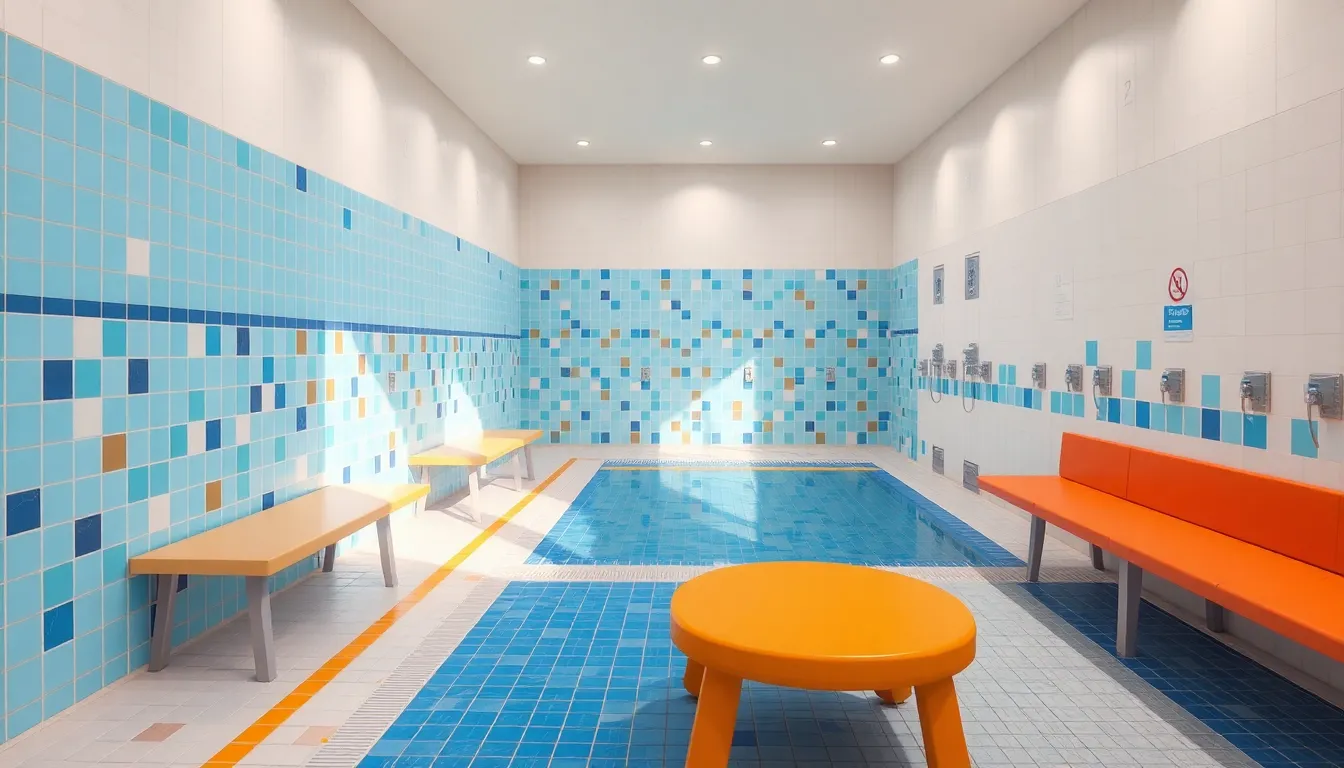
Creating functional changing spaces becomes especially important when designing for families with diverse needs and ages. We’ll explore key elements that make pool changing rooms both practical and safe for everyone who uses them.
Separate Adult and Children’s Areas
Designating distinct zones for adults and children enhances privacy while addressing different comfort levels. Children’s changing spaces benefit from lower hooks positioned at kid-friendly heights and benches sized appropriately for smaller users. Playful decor elements like colorful tiles or fun wall graphics help engage young swimmers and make the space more inviting for them.
Adult areas focus primarily on functionality with amenities that cater to grown-up needs. These spaces typically include full-length mirrors, comfortable seating options, and adequate storage for personal belongings. Privacy becomes more critical in adult sections, so we recommend incorporating visual barriers or separate entrances when possible.
Separating these areas improves the overall user experience by managing different requirements effectively. Parents can supervise children while maintaining their own privacy, and the different height requirements for fixtures make both spaces more comfortable to use.
Safety Features and Non-Slip Flooring
Non-slip flooring materials prevent dangerous falls on wet surfaces throughout the changing area. Textured ceramic tiles provide excellent grip while remaining easy to clean, and rubberized mats offer additional traction in high-traffic zones. These materials become essential given the constant moisture exposure in pool changing environments.
Rounded corners on benches and fixtures significantly reduce injury risks for all users. Sharp edges pose particular dangers when people move quickly through wet spaces, so we prioritize smooth, curved designs on all built-in elements. Cabinet doors and storage units should also feature soft-close mechanisms to prevent finger injuries.
Adequate lighting enhances visibility and contributes to overall safety in the changing room. LED fixtures with moisture-resistant housings provide bright, even illumination while withstanding humid conditions. Clear pathways and proper ventilation systems also contribute to creating safe, comfortable environments for families.
Easy-Clean Surfaces and Materials
Waterproof and mold-resistant materials form the foundation of low-maintenance changing room design. Ceramic tiles, treated composite wood, and specialized plastics resist moisture damage while standing up to regular cleaning routines. These materials also handle exposure to chlorine and other pool chemicals without deteriorating over time.
Smooth surface finishes allow for quick cleaning while preventing grime buildup in hard-to-reach areas. We recommend minimizing grout lines and avoiding textured surfaces that can trap dirt and bacteria. Seamless wall panels and continuous flooring materials make maintenance tasks much more manageable for busy families.
Material choices that resist chemical damage extend the lifespan of your changing room investment. Pool environments expose surfaces to harsh chlorine compounds and cleaning agents, so selecting specially formulated materials prevents premature wear and discoloration. Composite plastics and marine-grade finishes offer excellent durability in these challenging conditions.
Budget-Friendly Pool Changing Room Transformations
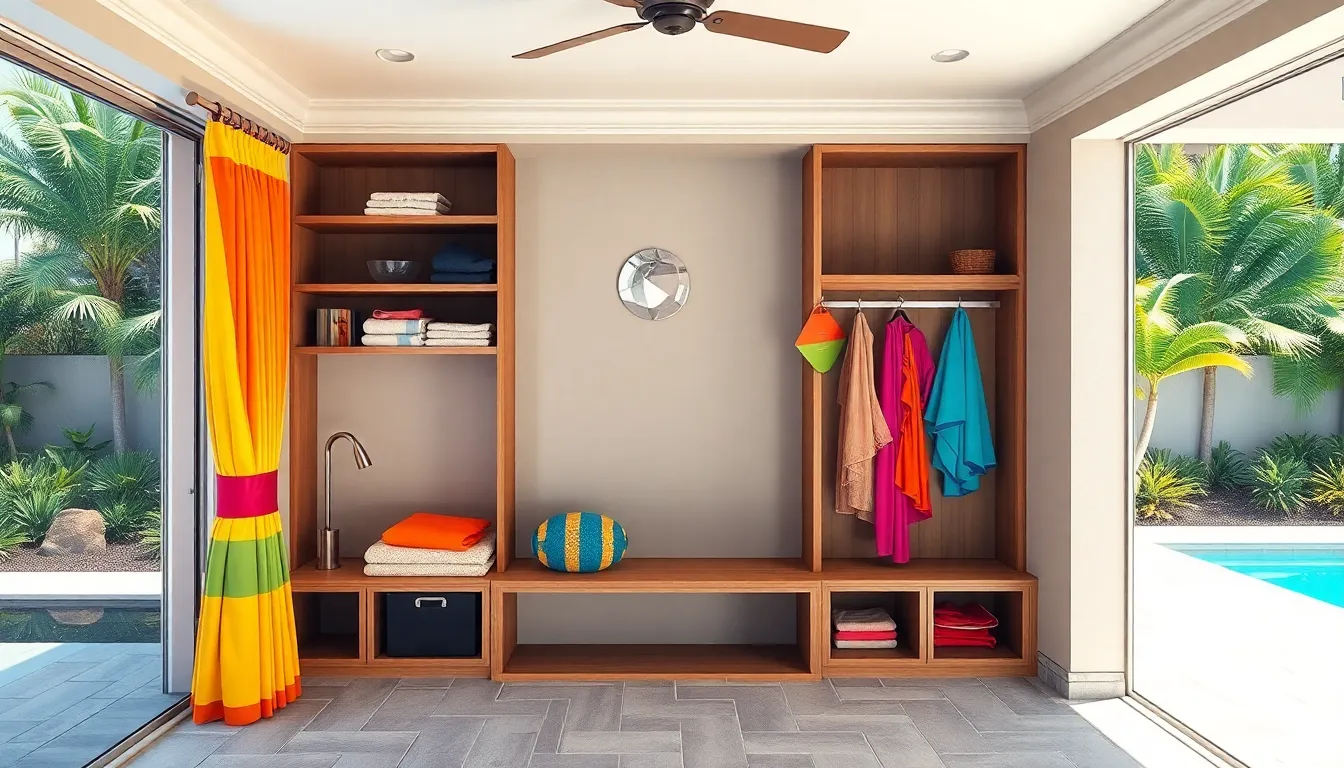
Creating a functional pool changing room doesn’t require very costly or extensive renovations. We can transform any poolside space into an organized, attractive changing area using smart DIY answers and affordable materials.
DIY Storage and Organization Hacks
Maximize vertical space with custom shelving made from inexpensive wood or repurposed materials. We recommend installing floating shelves at various heights to accommodate towels, swim gear, and personal items while keeping the floor area clear.
Build custom storage benches that serve dual purposes by providing seating and hidden storage compartments underneath. These built-in answers can incorporate clean-up sinks and changing seats, maximizing functionality in compact spaces.
Install strategic hooks and towel racks at different heights to accommodate family members of all ages. Position these fixtures near entry points and changing areas for maximum convenience and accessibility.
Create portable changing spaces using PVC pipe frames with fabric panels that can be moved or reconfigured as needed. This lightweight solution offers flexibility while maintaining privacy and can be easily stored during off-season months.
Construct picket fence style panels from pine boards treated with waterproof sealant for an attractive privacy solution. These charming panels provide excellent coverage while adding visual appeal to the changing area.
Affordable Material Alternatives
PVC pipe proves invaluable for creating lightweight, weather-resistant frames for curtains and changing room structures. This inexpensive material resists moisture damage and can be easily assembled without special tools or expertise.
Pine wood offers excellent value when properly sealed for outdoor durability, making it perfect for fence-style changing areas and custom storage answers. The natural grain adds warmth while remaining budget-conscious.
Outdoor fabric provides weather protection without the cost of permanent walls when attached to frames or existing fences. Choose waterproof materials that can withstand sun exposure and frequent moisture contact.
Cedar wood delivers moderate pricing with superior weather resistance and natural beauty for semi-permanent structures. This material ages gracefully and requires minimal maintenance compared to other wood options.
Quick Update Ideas Under $500
Transform existing walls with waterproof outdoor paint in fresh colors that complement your pool area’s aesthetic. This simple update creates immediate visual impact while protecting surfaces from moisture damage.
Add functional lighting answers using inexpensive outdoor fixtures that enhance both ambiance and safety during evening use. Solar-powered options eliminate electrical work while providing reliable illumination.
Install weatherproof storage systems including bins, baskets, and benches with built-in compartments to reduce clutter and improve organization. These additions keep essentials accessible while maintaining a clean appearance.
Incorporate outdoor curtains on PVC or lightweight frames for instant privacy that can be adjusted based on weather conditions and usage needs. Choose fade-resistant fabrics that coordinate with your outdoor décor.
Upgrade with small organizational accessories like adhesive hooks, magnetic strips, and over-the-door organizers that maximize storage without permanent installation. These details make important improvements to daily functionality and user experience.
Smart Technology Integration for Pool Changing Rooms
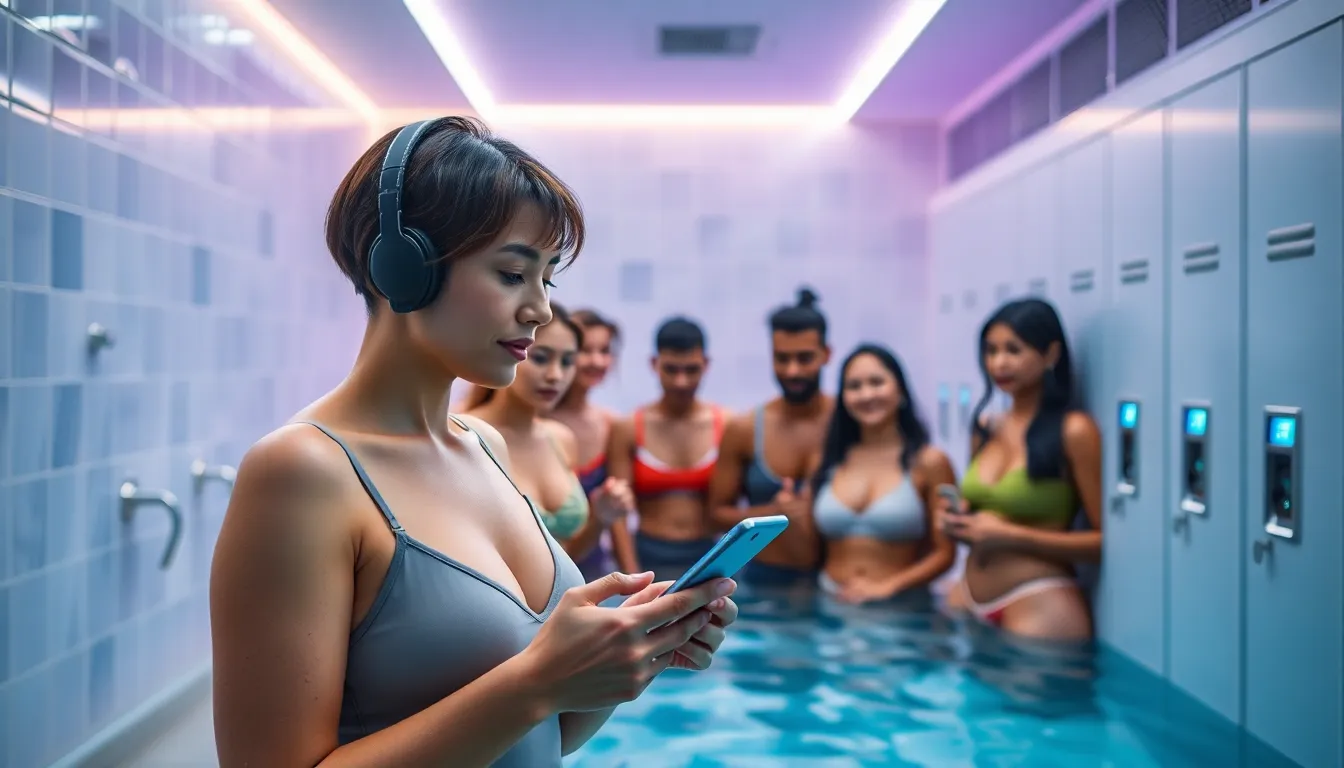
Modern pool changing rooms benefit significantly from smart technology that enhances user experience while improving operational efficiency. We’ve researched the most effective tech answers that transform basic changing facilities into sophisticated, convenient spaces.
Automated Lighting and Climate Control
Sensor-activated LED fixtures revolutionize how we approach pool changing room illumination by automatically adjusting brightness based on occupancy and time of day. These systems eliminate the need for manual switches, reducing touchpoints that improve hygiene standards while ensuring spaces remain well-lit to minimize slip hazards. Energy efficiency increases dramatically as lights only activate when needed, cutting operational costs for pool facilities.
Smart thermostats paired with automated climate control systems maintain optimal temperature and humidity levels throughout the changing area. We recommend installing these systems to prevent dampness and mold growth, which commonly plague pool environments. Remote adjustment capabilities allow facility managers to modify settings from anywhere, ensuring consistent comfort for users regardless of external weather conditions.
Waterproof Audio and Entertainment Systems
Water-resistant speakers designed specifically for wet environments enhance the relaxation experience in pool changing rooms and shower areas. These specialized audio systems withstand high humidity and occasional water exposure while delivering clear sound quality for music, announcements, or ambient nature sounds. Integration with smartphone apps allows users to control their audio experience, creating personalized atmospheres during changing and showering routines.
Built-in entertainment systems can include waterproof displays for weather updates, facility announcements, or even streaming content. We’ve found that these installations work particularly well in luxury pool facilities where extended changing and grooming sessions are common. Sound isolation features ensure audio doesn’t disturb neighboring areas while maintaining rich acoustics within the changing space.
Digital Lockers and Security Features
Electronic keypad lockers eliminate the frustration of lost keys while providing enhanced security through unique access codes for each user. RFID and biometric access systems offer even greater convenience, allowing users to unlock lockers with cards or fingerprints rather than remembering numerical combinations. These digital systems typically feature waterproof construction and humidity resistance, making them ideal for pool environments where traditional locks might corrode or malfunction.
Smartphone app integration enables users to reserve, lock, and unlock lockers remotely, streamlining the entire changing room experience. Security cameras with smart monitoring capabilities provide additional safety oversight, automatically alerting facility staff to unusual activities or extended occupancy periods. We recommend combining these digital locker systems with motion sensors that track usage patterns, helping facility managers optimize space allocation and maintenance schedules.
Pool Changing Room Lighting Ideas
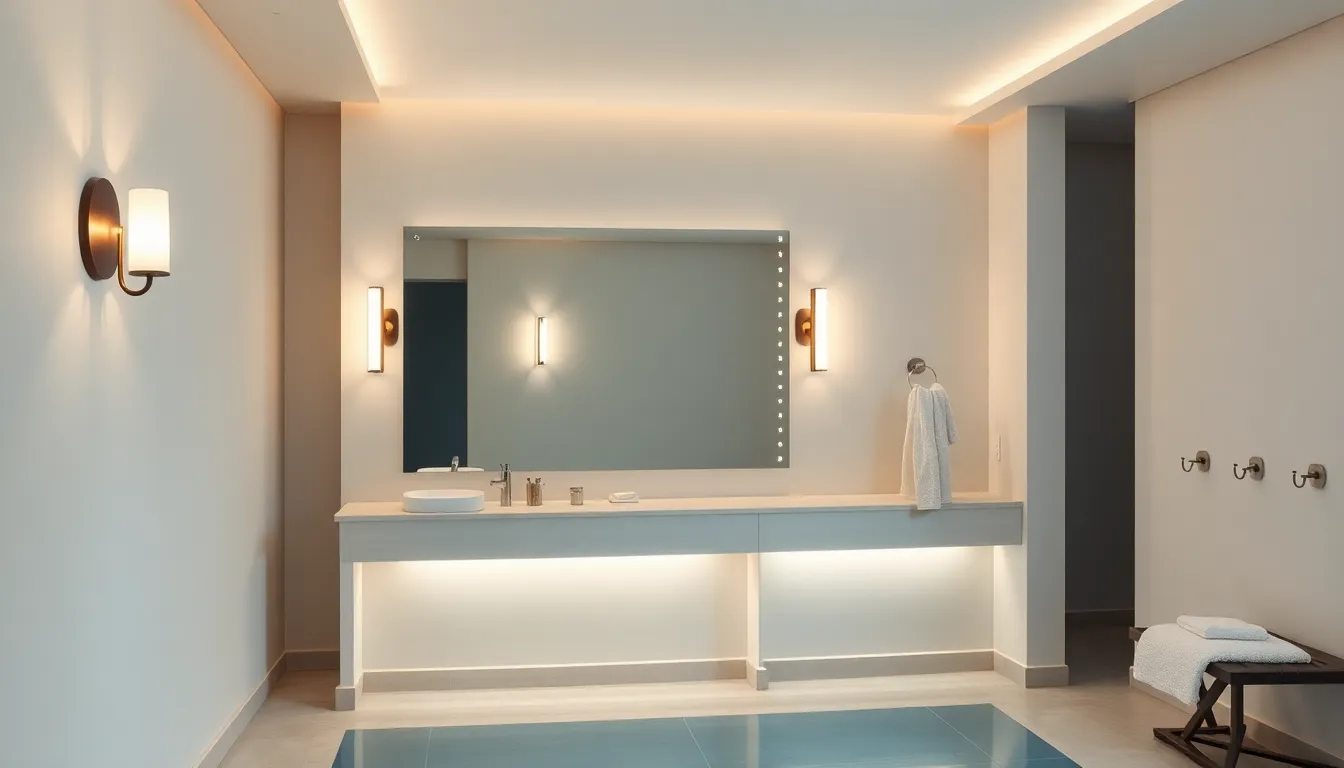
Proper lighting transforms your pool changing room from a basic utility space into a functional and inviting environment. We’ll explore essential lighting strategies that enhance both practicality and ambiance while ensuring durability in wet conditions.
Task Lighting for Grooming Areas
Task lighting around mirrors and grooming stations ensures clear visibility for essential activities like shaving, applying makeup, or styling hair. Bright LED lights positioned at eye level eliminate shadows on faces and provide the crisp illumination needed for detailed grooming tasks. Vanity style fixtures work exceptionally well in these areas because they deliver focused light without creating uncomfortable glare.
We recommend installing LED strip lights along the top and sides of mirrors to achieve even illumination across the entire reflection surface. This configuration prevents the harsh shadows that single overhead lights often create. Motion activated task lights offer added convenience by automatically illuminating when someone approaches the grooming area.
Ambient Lighting for Relaxation
Soft ambient lighting creates a calming transition space between the active pool environment and the peaceful changing room atmosphere. Wall sconces with warm LED bulbs provide gentle illumination that promotes relaxation without overwhelming the senses. Recessed ceiling lights equipped with dimmer switches allow you to adjust brightness levels throughout the day and evening.
Indirect LED strips hidden behind architectural elements like crown molding or floating shelves wash walls with subtle light that enhances the room’s overall ambiance. This technique creates depth and visual interest while maintaining the soothing environment that makes changing rooms feel like personal retreats. Color temperature settings between 2700K and 3000K produce the warm, inviting glow that encourages relaxation.
Waterproof Fixture Selections
High humidity and water exposure in pool changing rooms require lighting fixtures specifically rated for wet or damp locations to ensure safety and longevity. Waterproof LED fixtures with IP65 or higher ratings protect internal components from moisture damage while maintaining consistent performance over time. Enclosed sconces prevent water infiltration and reduce maintenance requirements compared to open fixtures.
Sealed recessed lights designed for bathroom and pool area applications offer clean aesthetics without compromising durability. We suggest choosing fixtures with corrosion resistant finishes like brushed stainless steel or powder coated aluminum that withstand chlorine exposure and humidity fluctuations. Marine grade electrical connections and GFCI protection provide additional safety measures that prevent electrical hazards in wet environments.
Essential Pool Changing Room Storage Solutions
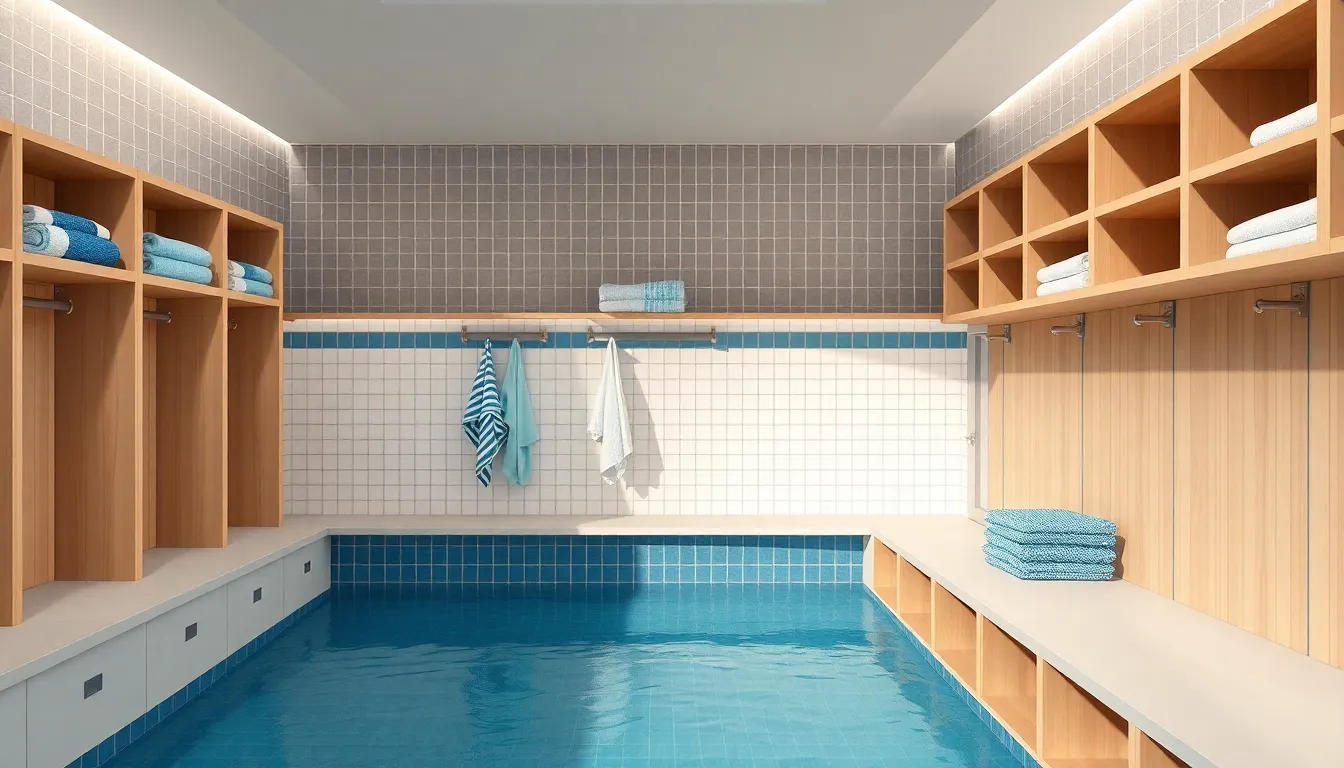
Storage answers form the backbone of any well-designed pool changing room, ensuring both functionality and organization. We’ll explore the most effective approaches to keep your space tidy and user-friendly.
Built-In Lockers and Cubbies
Built-in lockers transform chaotic changing rooms into organized retreats where everyone has their designated space. Custom cabinetry installations provide secure storage for personal items while preventing clutter from accumulating on benches and floors. Individual cubbies work exceptionally well for families, giving each member their own compartment for belongings.
Smart designs separate wet and dry storage compartments within the same built-in unit. Ventilated sections allow damp items to air dry while sealed compartments protect valuables and dry clothes. Upper cubbies typically house dry items like clothing and electronics, while lower sections with drainage accommodate wet swimwear and towels.
Wall-mounted lockers maximize floor space in smaller changing rooms. These installations can extend from floor to ceiling, providing abundant storage without consuming valuable square footage. Built-in benches beneath locker units create comfortable seating areas while concealing additional storage compartments.
Towel and Robe Organization Systems
Towel racks and hook systems prevent the common problem of soggy towels piling up on surfaces. Wall-mounted multi-hook boards provide quick access points near changing areas, allowing users to hang items immediately after use. Open slat designs promote airflow around hanging towels, reducing mildew formation and unpleasant odors.
Dedicated robe hangers positioned at comfortable heights accommodate different family members’ needs. Adjustable hook systems adapt to various garment lengths, from kids’ cover-ups to adult bathrobes. Some installations feature pull-out racks that extend when needed but remain compact against the wall when not in use.
Ventilated towel shelves offer an alternative to traditional hanging systems. These shelving units feature mesh or slotted surfaces that allow air circulation while providing organized storage for folded towels and pool accessories. Waterproof materials ensure longevity in humid changing room environments.
Wet and Dry Item Separation
Dual compartment systems address the critical need to separate damp items from dry belongings. Mesh bins positioned near changing areas collect wet swimwear and towels, allowing water to drain while keeping moisture away from clothing. These bins often feature removable liners for easy cleaning and maintenance.
Waterproof storage answers include sealed containers and cabinets designed specifically for pool environments. These units protect electronics, medications, and important documents from humidity while remaining easily accessible. Some designs incorporate drainage systems at the bottom to handle any water infiltration.
Strategic placement of wet storage areas near exits prevents users from carrying damp items through dry zones. Designated wet zones often feature tile flooring with floor drains, while dry areas use moisture-resistant but comfortable materials like vinyl plank or sealed wood. This separation maintains hygiene standards and extends the life of stored items.
Conclusion
Your pool changing room doesn’t have to be an afterthought – it can become one of the most functional and stylish additions to your outdoor space. Whether you’re working with a generous budget for luxury finishes or need creative answers for tight spaces we’ve shown you that every pool area can benefit from thoughtful changing room design.
The key lies in understanding your exact needs and choosing elements that align with your lifestyle. From smart storage answers that keep everything organized to lighting that creates the perfect ambiance these details work together to elevate your entire pool experience.
Remember that the best changing room designs balance practicality with aesthetics while considering factors like weather resistance privacy and family safety. With the right approach your pool changing room will become a valuable investment that enhances both your daily enjoyment and property value for years to come.
Frequently Asked Questions
What are the main benefits of having a pool changing room?
A pool changing room eliminates the inconvenience of changing poolside, provides privacy, protects belongings from weather, and adds significant value to your property. It creates a more comfortable and organized pool experience while transforming your pool area into a desirable entertainment destination for family and guests.
What design styles work best for pool changing rooms?
Popular design styles include modern minimalist (featuring clean lines and neutral colors), rustic natural (using reclaimed wood and stone elements), and luxury spa-inspired designs (incorporating premium materials like marble and natural stone). The choice depends on your personal preference, budget, and existing pool area aesthetics.
How can I maximize space in a small pool changing room?
Utilize compact corner layouts, install multi-functional furniture like benches with hidden storage, maximize vertical storage with wall-mounted racks, and choose wall-mounted fixtures. Built-in solutions, triangular shelving, and ceiling-mounted storage nets help keep small spaces organized and clutter-free while maintaining functionality.
What materials are best for outdoor pool changing rooms?
Weather-resistant materials are essential, including metal frames with opaque glass panels, concrete block walls, treated hardwoods, and waterproof finishes. These materials ensure durability, low maintenance, and longevity while withstanding outdoor elements like moisture, UV rays, and temperature fluctuations.
How much does it cost to build a pool changing room?
Costs vary significantly based on size, materials, and features. Budget-friendly DIY solutions can cost under $500 using materials like PVC pipe and treated pine wood. Mid-range projects typically range from $1,000-$5,000, while luxury spa-inspired designs with premium materials can cost $10,000 or more.
What safety features should I include in a family-friendly changing room?
Essential safety features include non-slip flooring, rounded corners on fixtures, adequate lighting, proper ventilation, and separate areas for adults and children. Use easy-clean surfaces resistant to moisture and chemicals, install lower hooks and benches for kids, and ensure all electrical fixtures are waterproof-rated.
What lighting options work best in pool changing rooms?
Combine task lighting (LED strip lights for grooming areas), ambient lighting (wall sconces with dimmers), and motion-activated lights for convenience. Always choose waterproof fixtures rated for high humidity environments. Layer different lighting sources to create both functional illumination and relaxing atmosphere.
How should I organize storage in my pool changing room?
Implement separate wet and dry storage zones, install built-in lockers or cubbies for personal items, use wall-mounted solutions to maximize floor space, and create designated areas for towels and robes. Ventilated sections for damp items and sealed compartments for valuables help maintain organization and hygiene.
Can I integrate smart technology into my pool changing room?
Yes, modern pool changing rooms can include automated lighting and climate control systems, waterproof audio and entertainment systems, and digital lockers with advanced security features. These technologies enhance user experience, improve energy efficiency, and provide convenient access to entertainment and storage management.
What ventilation considerations are important for pool changing rooms?
Proper ventilation prevents moisture buildup, mold, and mildew. Install natural ventilation systems like slatted wooden screens, exhaust fans for enclosed spaces, and consider open-air cabana designs. Adequate airflow is crucial for comfort, hygiene, and protecting materials from moisture damage.

